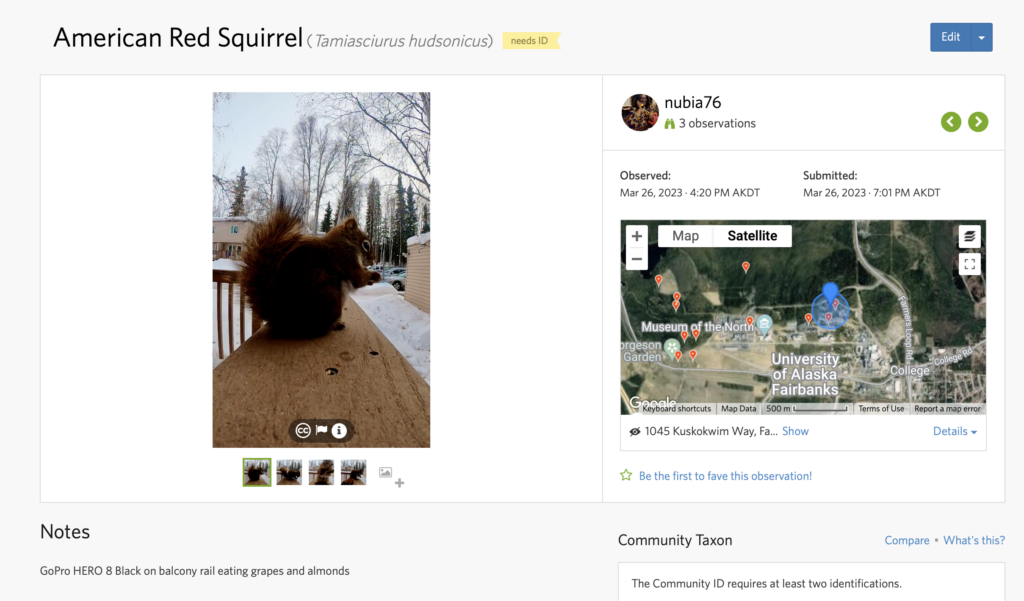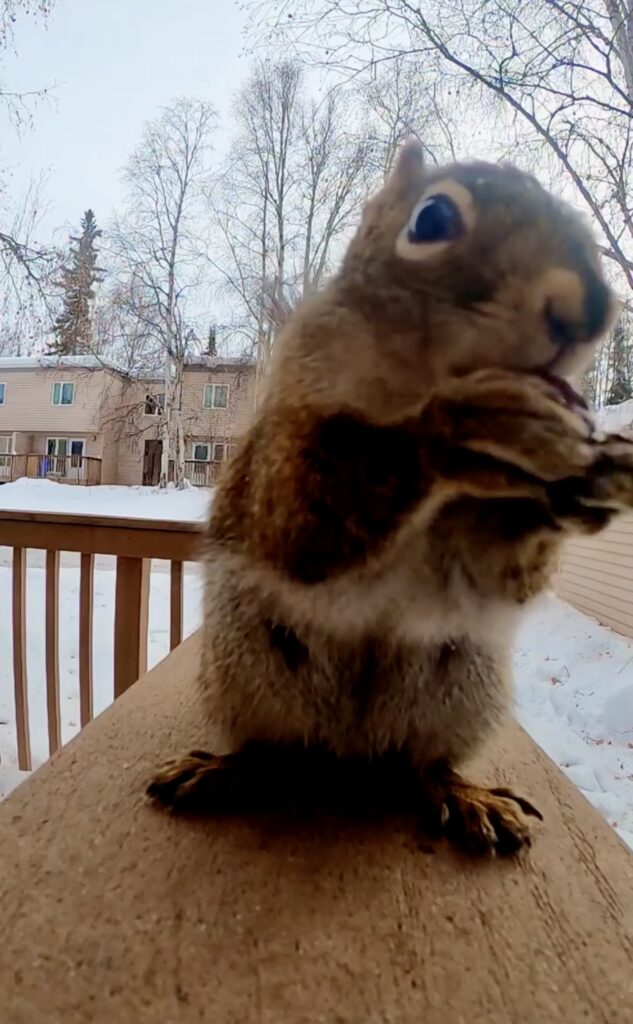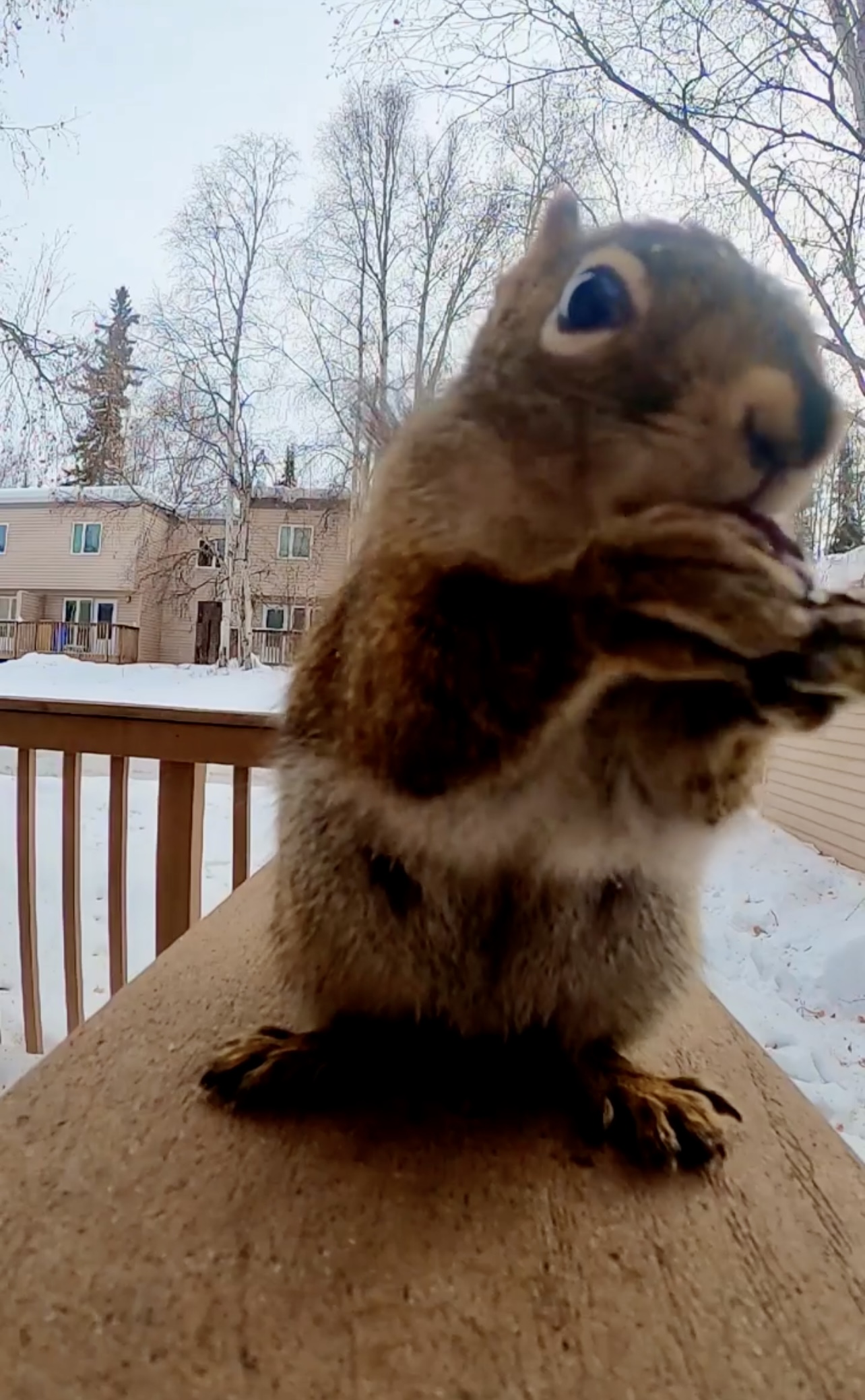There’s a squirrel living in the spruce trees next to out apartment on campus. Early last week, my wife thought to befriend the squirrel by placing a grape on our balcony rail. The first grape was gone without us knowing when it was taken. A couple of days later she placed three grapes on the rail, and we noticed they were all gone within an hour. I told her about my option to photograph a specimen for this assignment, so we devised a plan to monitor the squirrel more closely using my GoPro HERO 8 on a tripod sitting on our balcony.
Today was the day we had all our monitoring equipment along with grapes and almonds for bait. I started this observation about 12:30pm but I wasn’t sure if my camera settings were set correctly to record the squirrel. I put out 3 grapes, but it was not until almost 2pm did the squirrel come and take the grapes. I had the camera set on time-lapse to conserve battery, but the squirrel is so fast, the recording appeared like the grapes just vanished. I change my camera settings to Slo-mo. I place 5 grapes still attached to the vine. From inside through the window, I could see the squirrel running back and forth on the balcony but not taking the grapes. So, I thought maybe the squirrel thought it was too much of a challenge to take the grapes on the vine. I took the grapes off the vine and placed them back on the rail surrounded by 5 almonds. An hour or so later around 4:20pm, the squirrel took the bait, and I got 45 minutes’ worth of Slo-mo footage. Correcting the speed in post-production editing, the squirrel at one point sat in one spot for 3 minutes feeding on the almonds and grapes. The GoPro captured great audio as well. I don’t know what the great said but it was loud and chatty. Hopefully, that’s a sign of contentment.

While recording, I took the time to research the squirrel. It is only one tree living squirrel in Alaska which is the American Red Squirrel (Tamiasciurus hudsonicus). I learned from reading and observation that these squirrels are territorial for a one-half to one acre and if food is scares up to 6 acres. I also learned that they have more than one nest in their territory which explains why it runs back and forth from different nearby trees.
After recording and editing the video using REELS on Facebook as a quick method for editing, I downloaded the video and then took screenshots to have photos to upload into iNaturalist. Using iNaturalist, I was able to compare the squirrel to other similar observations. I’m sure it is an American Red Squirrel (Tamiasciurus hudsonicus) and I think it’s a female, but I need at least 2 observers to confirm the taxonomy for my observation to be tagged as “Research Grade.” iNaturalist only accepts photo and audio uploads so in the notes section I added the link to my Facebook REELS video post.
My question rather an ask is, will you please login/signup to iNaturalist and confirm my observation so it can be tagged as Research Grade? My username is Nubia76


I appreciate the amazing data collection process you made for the American Red Squirrel. It was an enjoyable read. I am not the most rtech savvy but I will try to get onto to iNaturalist to confirm your observation.
Great data collection! This was a very interesting to read about your process. I was able to get in and confirm. It looks like it is now Research Grade!
I really like your documentation of the American Red Squirrel! So cool you were able to observe the specimen from your balcony! To add I have confirmed your observation on INaturalist! Thanks for your post I found it very interesting!